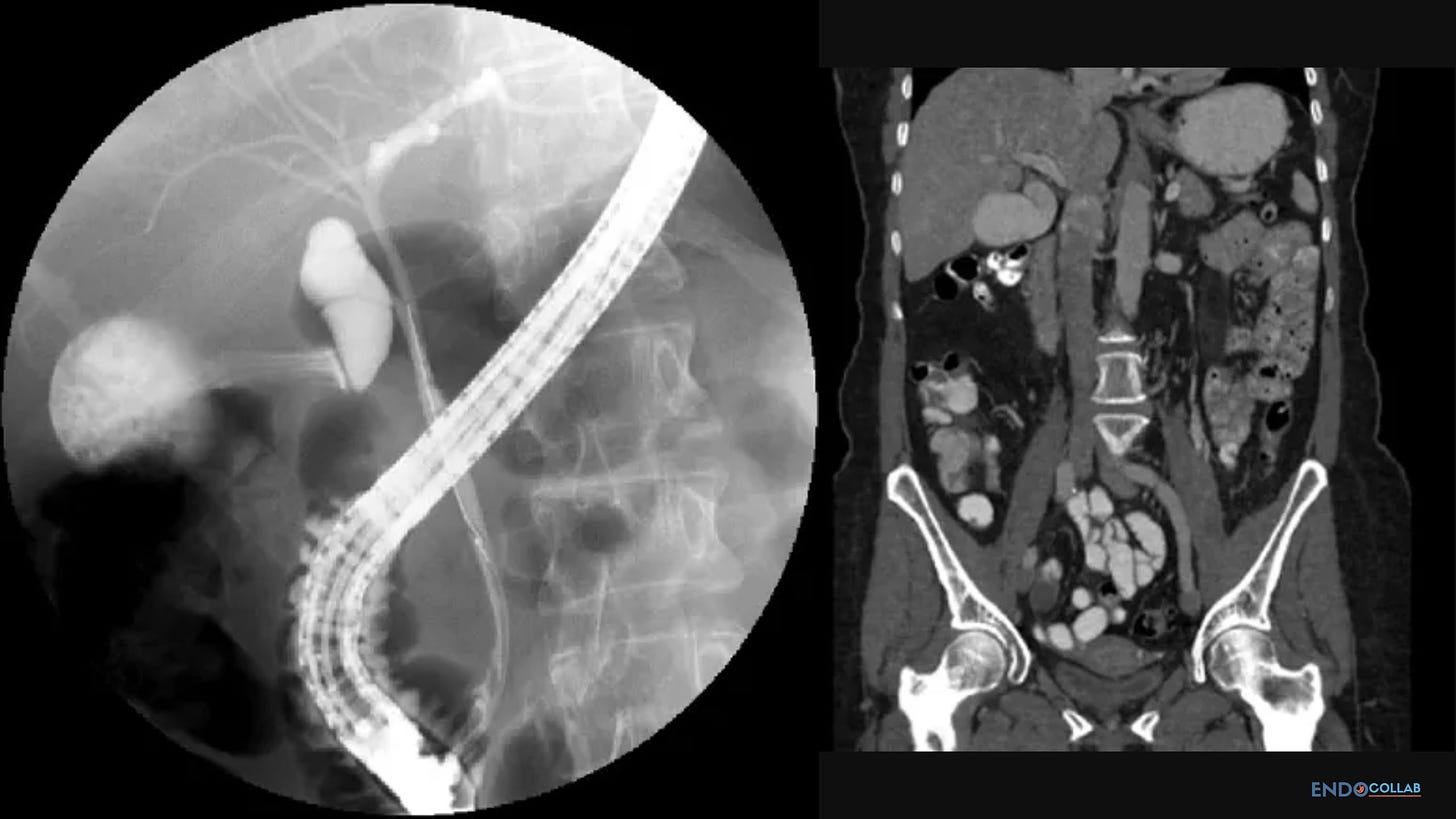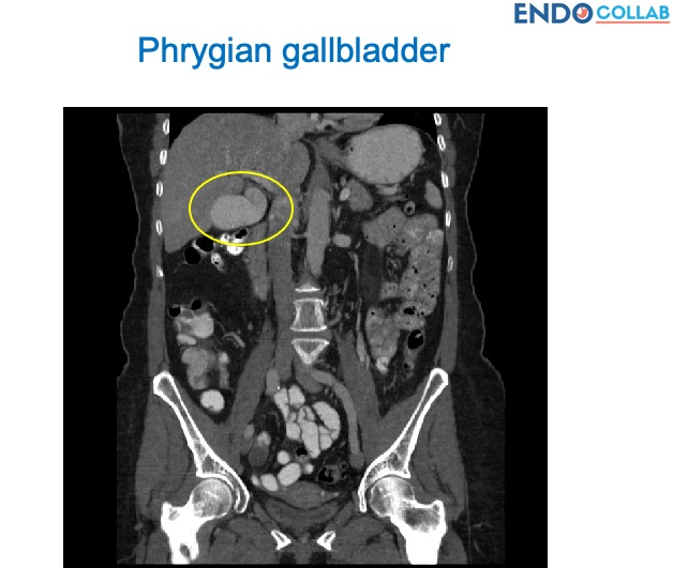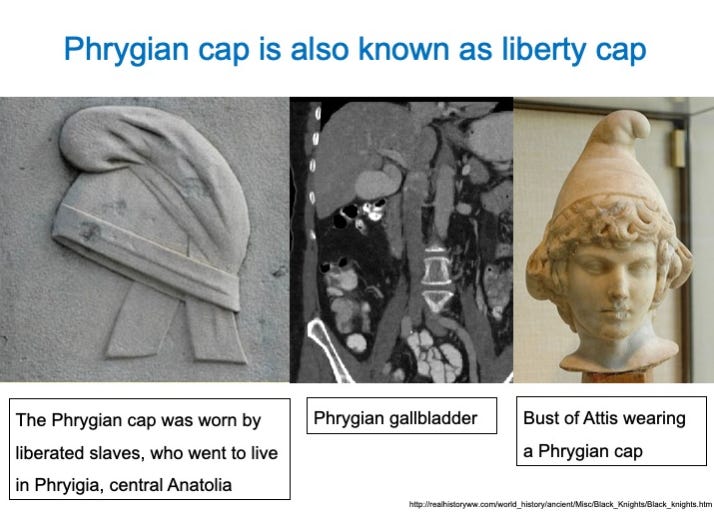What is a Phrygian (Cap) Gallbladder?
A phrygian cap gallbladder is a congenital anomaly of the gallbladder with an incidence of 4%. It can simulate a mass in the liver during hepatobiliary imaging and is sometimes mistaken for pathology. A Phrygian cap, however, has no pathological significance and normally causes no symptoms.
The gallbladder is a pear-shaped organ measuring about 7 cm long and 3 cm wide and is located on the undersurface of the liver. Variations of the gallbladder include anomalies of form, location or number of gallbladders. A phrygian cap is the most common congenital abnormality of the gallbladder with an incidence of 4%. Although it can simulate a mass in the liver on radiological imaging studies, it does not have any pathological significance, and there is no need for cholecystectomy, unless it causes symptoms such as biliary colic or cholecystitis (1).
The phrygian cap has many symbolic meanings and is represented in art, politics, sports, TV and many national flags and coins.
1. van Kamp MJ, Bouman DE, Steenvoorde P, Klaase JM. A phrygian cap. Case Rep Gastroenterol. 2013;7(2):347-351.
Join EndoCollab
✅ 1,000+ endoscopy strategies
✅ 1,000+ endoscopists
✅ EndoCollab community to ask your questions
✅ No obligations, no contracts, CANCEL ANYTIME






